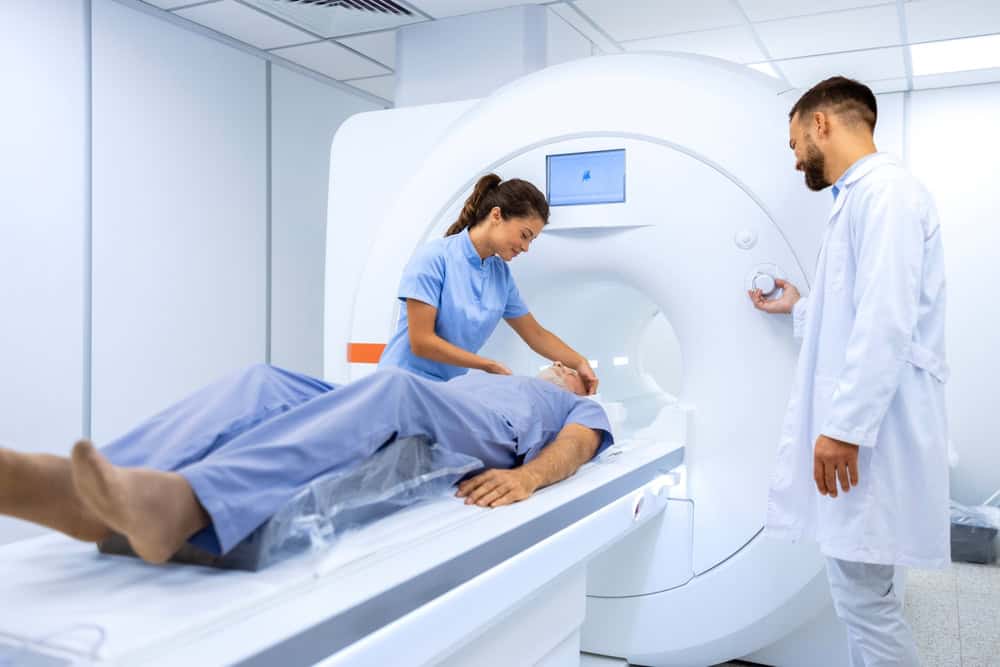Summary:
How to Read Your MRI Report: The Basic Structure
Every MRI report follows a similar format, and understanding this structure is your first step toward making sense of your results. The report typically starts with basic information about the scan itself, then moves into the radiologist’s observations.
The most important sections you’ll encounter are the “Findings” and “Impression.” The Findings section describes everything the radiologist sees, even minor details that might not be related to your symptoms. Think of this as a detailed inventory of your spine’s current condition.
The Impression section is where the radiologist summarizes the key findings and their significance. This is often the most relevant part for understanding what might be causing your pain, though it’s important to remember that not every finding necessarily explains your symptoms.
What Does "Disc Bulge" Really Mean on Your MRI Report
A disc bulge is one of the most common findings on spine MRIs, and it’s often much less scary than it sounds. Your spinal discs are like jelly donuts—they have a tough outer layer and a soft inner core that acts as a shock absorber between your vertebrae.
When a disc bulges, it means the outer layer is pushing outward beyond its normal boundaries, but it’s still intact. Think of it like a tire that’s slightly under-inflated—it might look a bit different, but it’s still doing its job. Many people have disc bulges without any pain or symptoms whatsoever.
The key distinction is between a bulge and a herniation. With a herniation, that outer layer actually tears, allowing the inner material to leak out. This is more likely to cause symptoms because the leaked material can irritate nearby nerves. However, even herniated discs don’t always cause pain.
We’ll correlate your MRI findings with your specific symptoms to determine if a disc bulge is actually the source of your discomfort. Location matters too—a bulge that’s pressing on a nerve root is more likely to cause problems than one that’s just sitting there minding its own business.
The size and direction of the bulge also influence whether it’s clinically significant. A small bulge that’s not touching any nerves might be noted in your report but require no treatment at all. This is why it’s crucial to discuss your results with a spine specialist who can put these findings in context with your symptoms and overall health picture.
Spinal Stenosis on MRI: Understanding Narrowing of Your Spine
Spinal stenosis sounds intimidating, but it simply means “narrowing.” Your spine has a canal that houses your spinal cord and nerve roots, and stenosis occurs when this space becomes tighter than normal. It’s like a tunnel that’s gotten a bit smaller over time.
This narrowing can happen in different areas of your spine. Central canal stenosis affects the main tube where your spinal cord travels, while foraminal stenosis involves the smaller openings where individual nerve roots exit the spine. You might see terms like “lateral recess stenosis” or “neural foraminal narrowing” in your report—these all describe different types of space reduction.
The causes of stenosis are usually related to normal wear and tear as we age. Ligaments can thicken, joints can develop arthritis, and discs can lose height, all of which can contribute to less space for your nerves. It’s actually quite common in people over 50, and many individuals with mild stenosis have no symptoms at all.
Symptoms typically develop when the narrowing becomes severe enough to compress nerves or the spinal cord itself. You might experience pain that worsens with walking or standing, numbness or tingling in your legs, or weakness. Interestingly, many people with stenosis feel better when leaning forward, like when pushing a shopping cart, because this position opens up the spinal canal slightly.
The degree of stenosis is usually described as mild, moderate, or severe. Your symptoms don’t always correlate directly with the severity seen on MRI—some people with severe stenosis on imaging have minimal symptoms, while others with moderate changes experience significant discomfort. This is why our clinical evaluation is so important in determining the best treatment approach.
Treatment options range from physical therapy and medications for mild cases to minimally invasive procedures or surgery for more severe symptoms that don’t respond to conservative care.
Want live answers?
Connect with a NY Spine Medicine expert for fast, friendly support.
Decoding Medical Jargon: Common Terms in Spine MRI Reports
Medical terminology can make your MRI report feel like it’s written in code, but most terms follow logical patterns once you understand the basics. Many spine-related terms combine root words that describe location, condition, or severity.
Understanding anatomical directions helps too. “Anterior” means toward the front of your body, “posterior” means toward the back, and “lateral” refers to the sides. When your report mentions these directions, it’s helping pinpoint exactly where a problem is located.
Don’t be alarmed by every medical term in your report. Words like “mild,” “minimal,” or “trace” usually indicate findings that are barely noticeable and often not clinically significant. Remember, radiologists document everything they see, even normal age-related changes that don’t require treatment.
What "Degenerative Changes" Actually Means for Your Spine Health
“Degenerative changes” might sound scary, but it’s actually a normal part of aging—like getting gray hair or wrinkles, but for your spine. These changes occur as the structures in your spine gradually wear over time, and they’re found in most adults over 40, whether they have back pain or not.
Common degenerative changes include disc desiccation (drying out), disc height loss, and facet joint arthritis. Your discs naturally lose water content as you age, which can make them appear darker on MRI scans. This is completely normal and doesn’t automatically mean you’ll have pain or need treatment.
Facet joint changes, often described as “facet arthropathy” or “facet hypertrophy,” refer to arthritis in the small joints that connect your vertebrae. These joints can develop bone spurs or become enlarged, just like arthritis in other parts of your body. Again, many people have these changes without any symptoms.
The key is understanding that degenerative changes are incredibly common and don’t necessarily correlate with pain levels. Some people with extensive degenerative changes feel fine, while others with minimal changes experience significant discomfort. We’ll help determine which, if any, of these changes might be contributing to your symptoms.
Treatment for symptomatic degenerative changes typically starts with conservative approaches like physical therapy, exercise, and sometimes anti-inflammatory medications. More advanced treatments are reserved for cases where conservative care isn’t providing adequate relief and the changes are clearly linked to your symptoms.
Understanding Signal Changes and What They Mean
MRI reports often mention “signal changes” or “signal intensity,” which refers to how different tissues appear on the scan. Different structures naturally have different signal intensities—healthy bone marrow appears bright on certain sequences, while muscles appear darker.
When radiologists note “abnormal signal,” they’re identifying areas that look different from what they’d expect to see in healthy tissue. This could indicate inflammation, fluid accumulation, or other changes. However, not all signal changes are problematic or require treatment.
Modic changes are a specific type of signal change seen in the vertebrae adjacent to discs. These changes are classified as Type 1, 2, or 3, with each type representing different stages of bone and marrow changes. While they can sometimes be associated with pain, many people have Modic changes without any symptoms.
High signal in discs on certain MRI sequences can indicate annular tears—small cracks in the outer disc layer. While this might sound concerning, annular tears are actually quite common and often heal on their own without causing lasting problems. We’ll determine whether these findings are relevant to your symptoms.
Understanding that signal changes are often just the MRI’s way of showing normal variations or minor wear-and-tear can help reduce anxiety about your results. The most important factor is whether these changes correlate with your specific symptoms and functional limitations.
We’ll interpret these signal changes in the context of your clinical presentation, helping you understand which findings matter for your care and which are simply incidental observations that don’t require intervention.
Making Sense of Your MRI Results: Next Steps for Your Spine Health
Understanding your MRI report is just the beginning of your journey toward better spine health. Remember that MRI findings don’t always directly correlate with symptoms—many people have abnormal-looking scans but feel fine, while others with minimal changes experience significant pain.
The most important step is discussing your results with a qualified spine specialist who can interpret your findings in the context of your specific symptoms, lifestyle, and health goals. We’ll help you understand which findings are clinically relevant and which are simply normal age-related changes that don’t require treatment.
Don’t let confusing medical terminology create unnecessary anxiety about your condition. Many MRI findings that sound serious are actually quite common and manageable with the right approach. Focus on working with your healthcare team to develop a treatment plan that addresses your symptoms and helps you return to the activities you enjoy. If you’re looking for expert interpretation of your MRI results and comprehensive spine care in NYC, we at NY Spine Medicine offer the specialized knowledge and personalized approach you need to understand your condition and explore effective treatment options.





